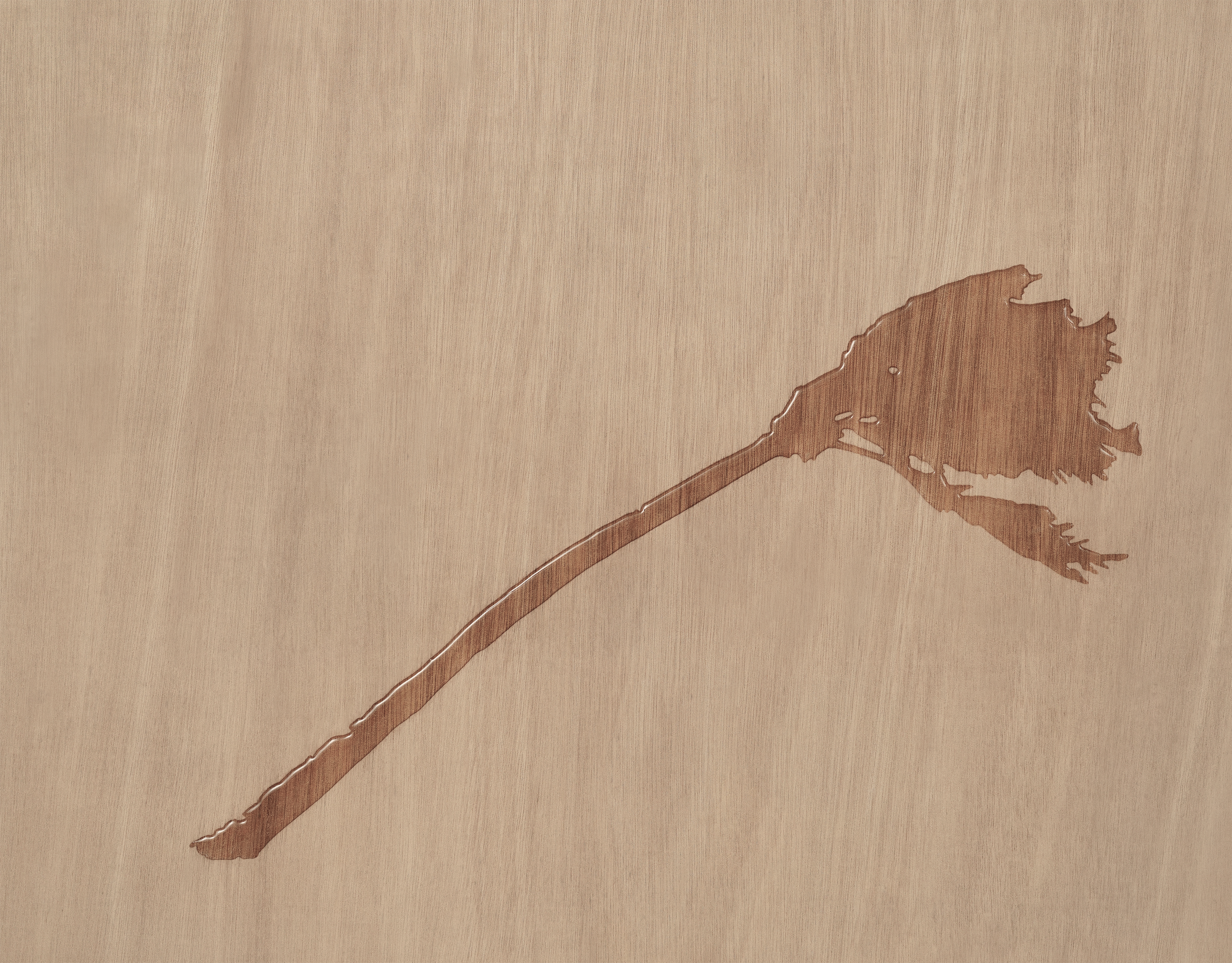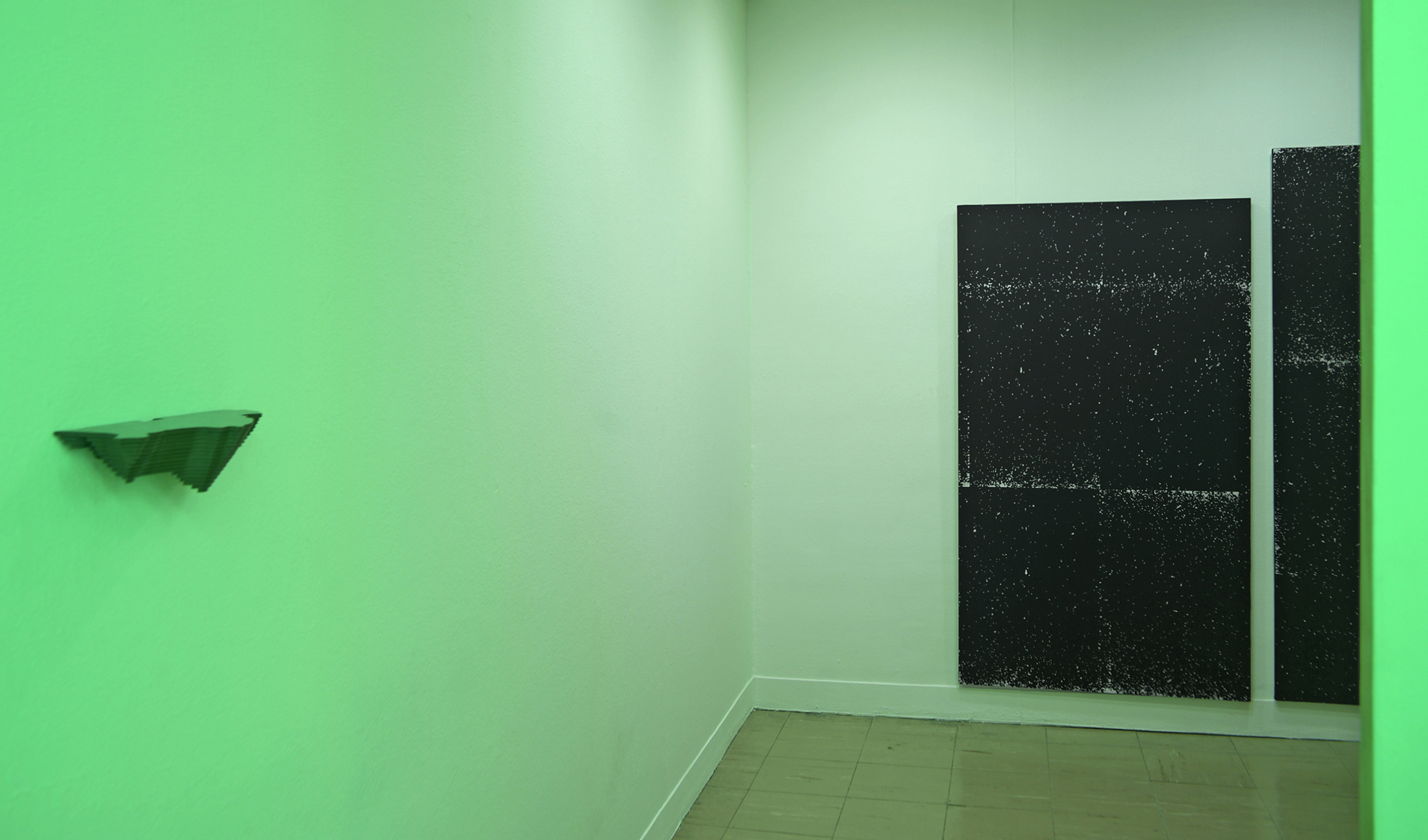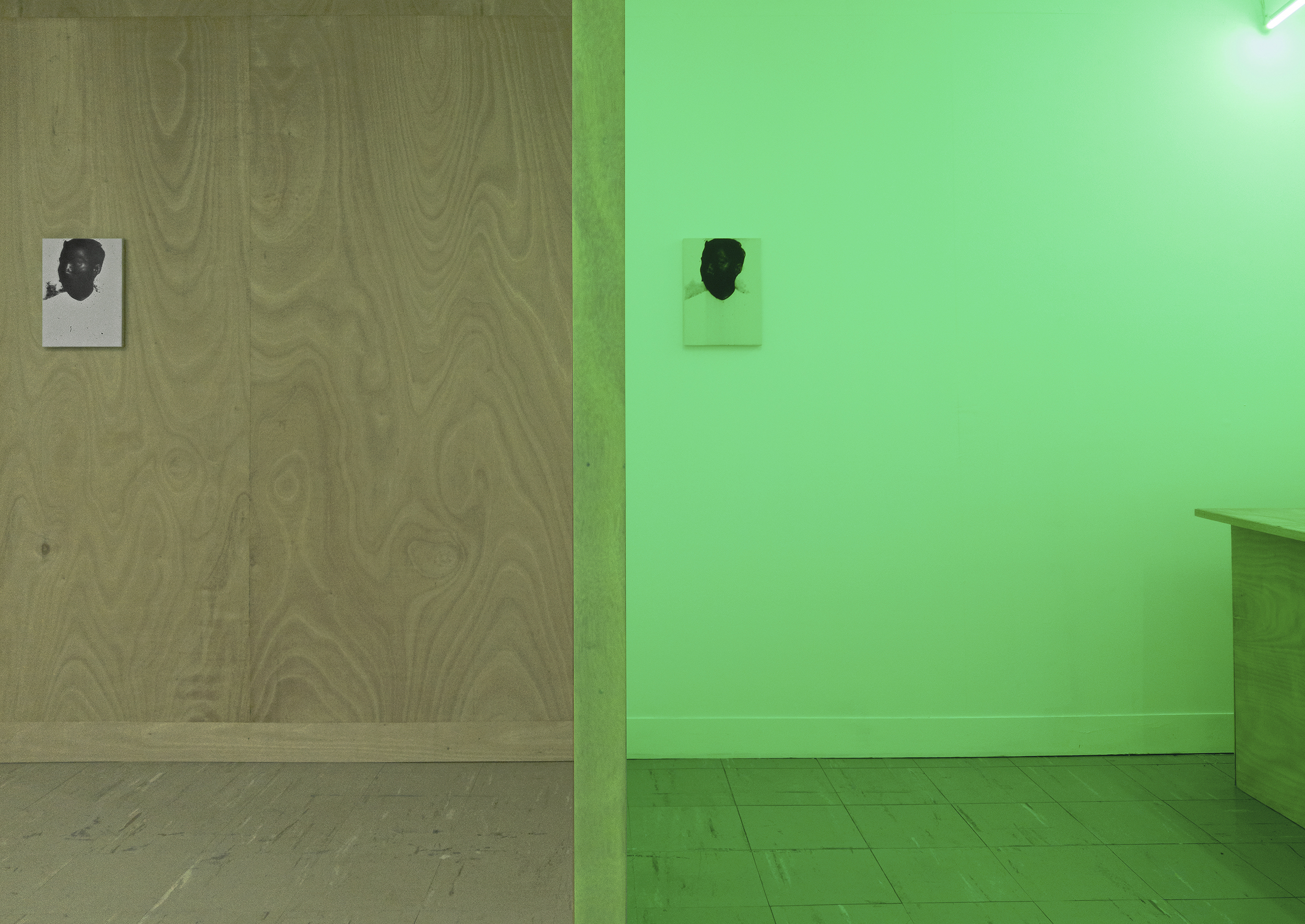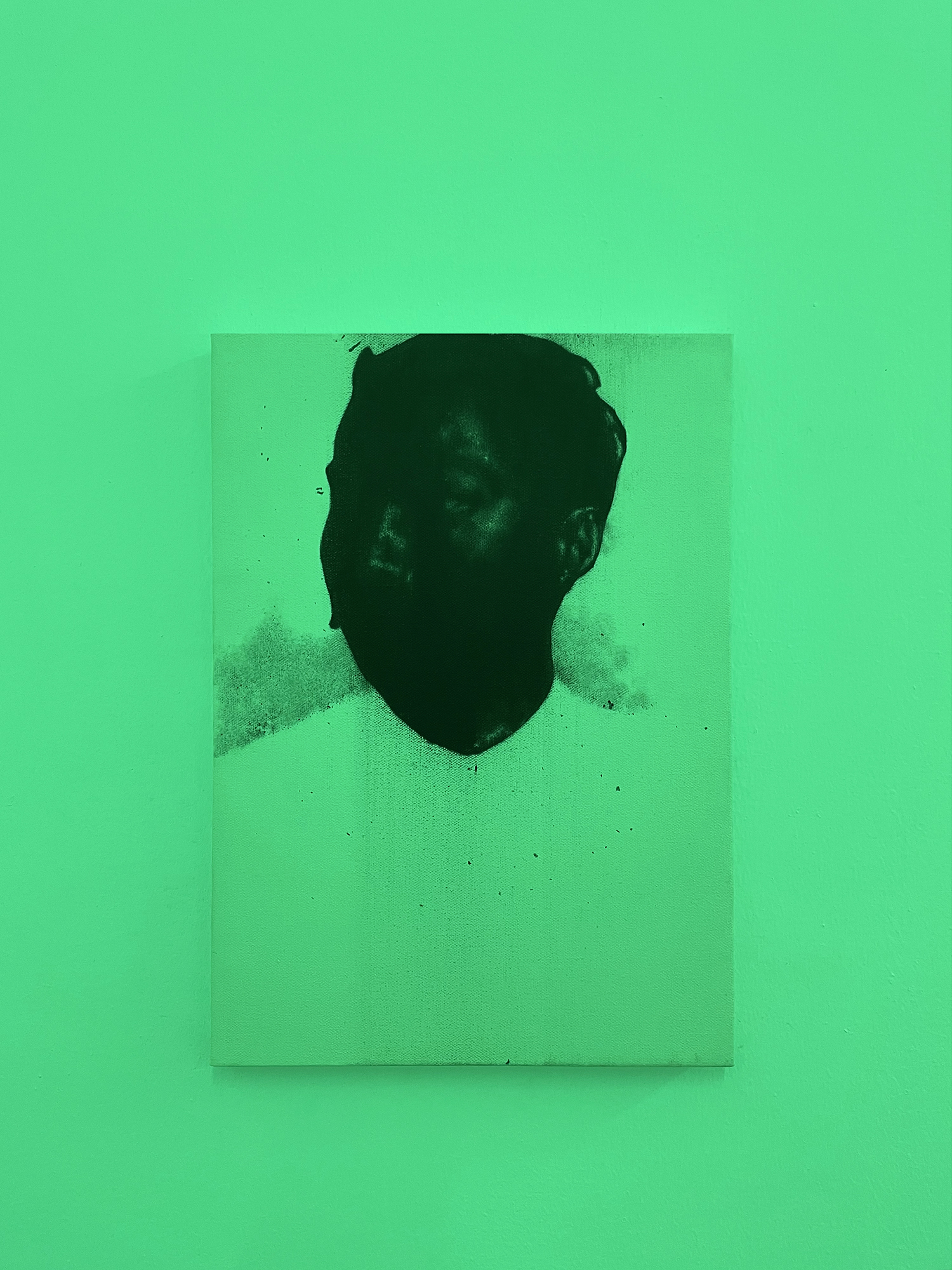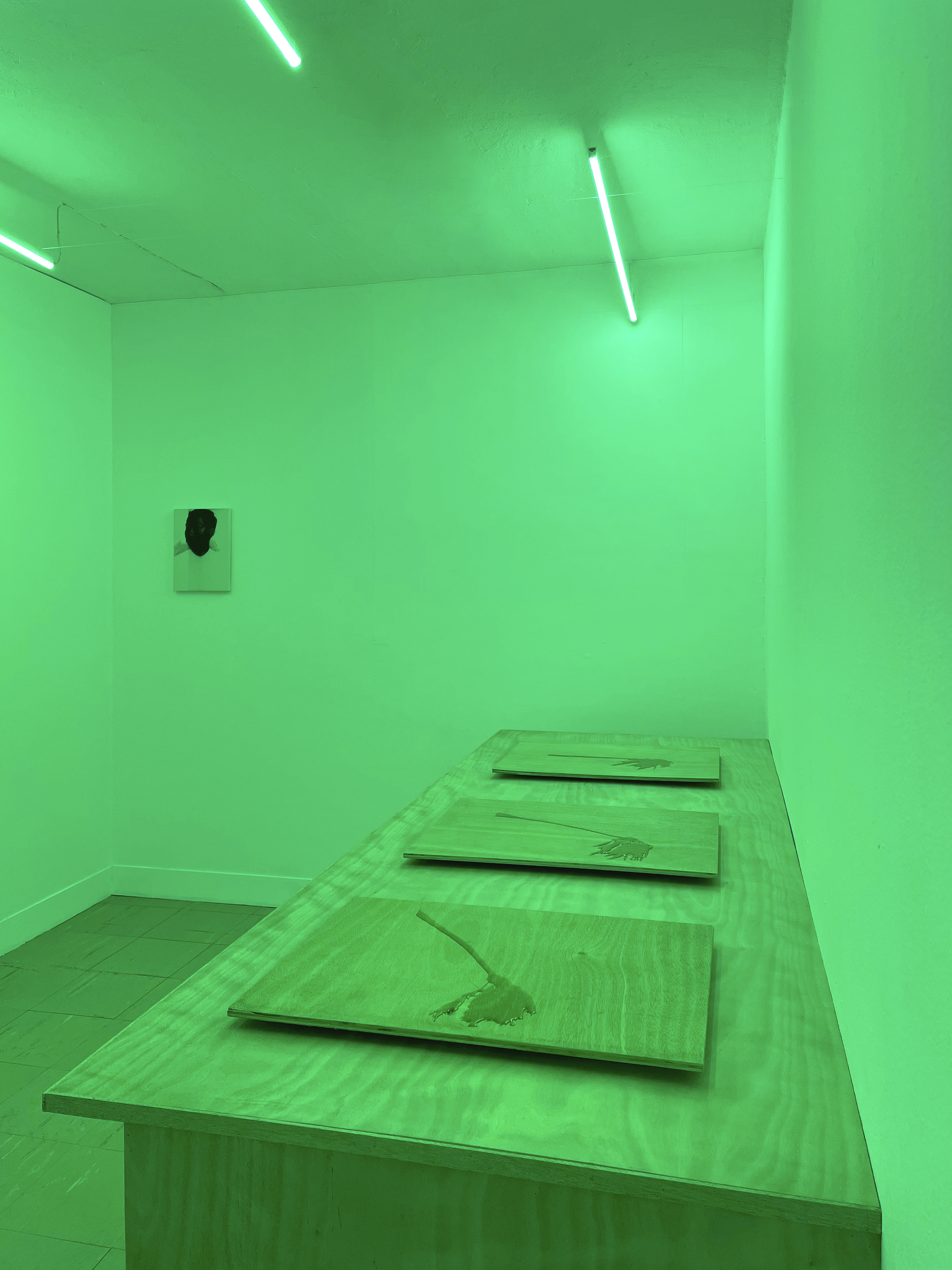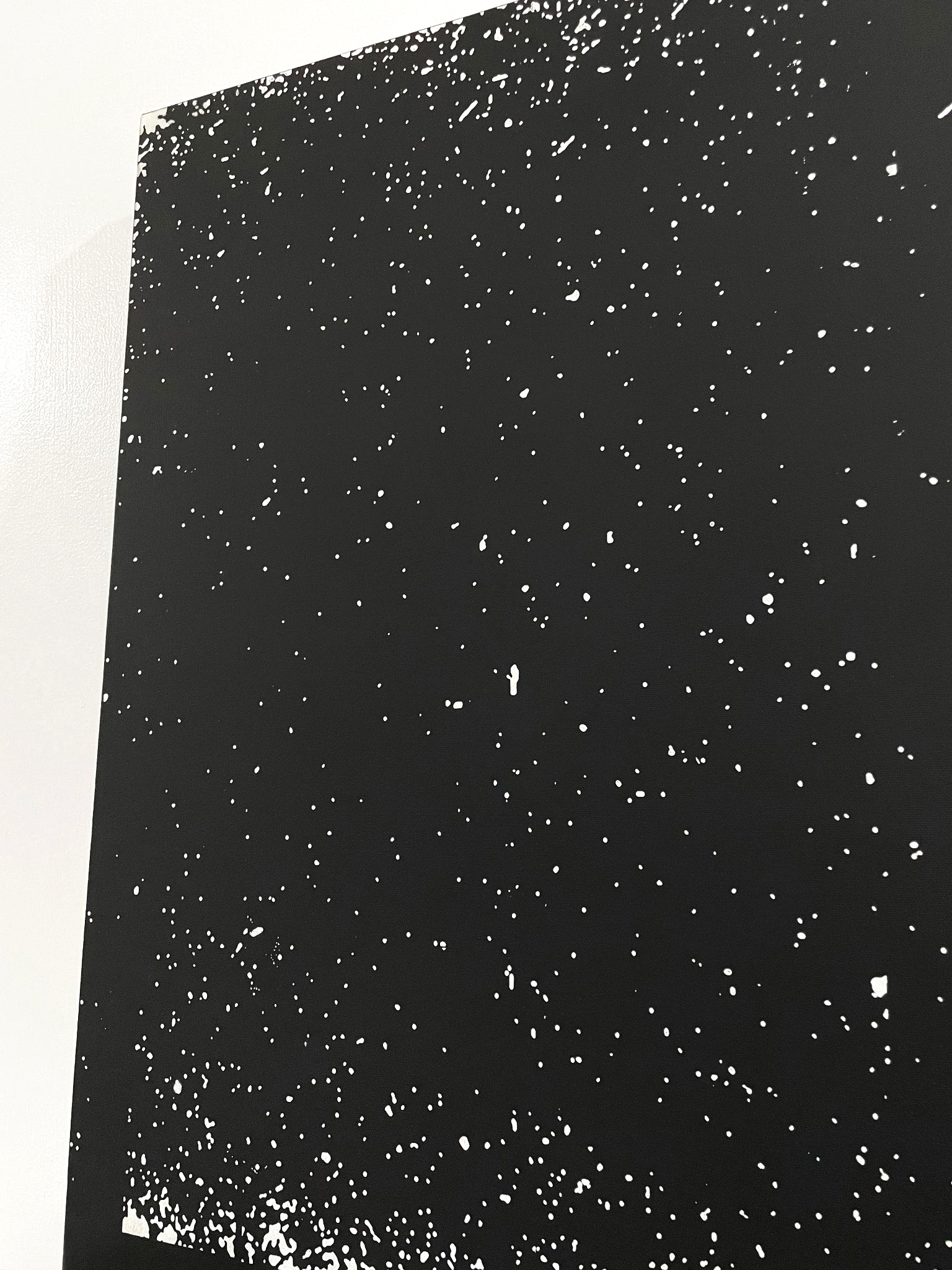EXHIBITIONS
The New Word for World is Archipelago
Thirteen Artists Awards Exhibition
Cultural Center of the Philippines
2022
The exhibition is an extension of the artist’s short introduction to archipelagic thinking, a visual essay commissioned by the School of Commons through research lab Learning in Island Ecologies.
︎︎︎Read essay
Three out of five Thrashing Palm Trees in the essay of the same title, drawn with water and a hydrophobic solution on sheets of recycled plywood, are featured in the exhibition as durational installations. Patterned after found footage of storms in tropical and subtropical countries that occupy the top ranks of the Climate Risk Index (among them, the Philippines) despite global-scale carbon emissions coming from the other hemisphere, the Trees assert geographic interconnectedness in the face of the climate crisis.
A 3D-printed speculative island, formed by the impossible collision of the political borders of Cagayan and Khyber Pakhtunkhwa, links the issue of climate to the lasting impact of colonialism. Located in postcolonial Philippines and Pakistan respectively, these regions are longitudes apart but where massive, storm-induced landslides have occurred in 2020. Next to it, in the space adjacent to the green-lit room where the Trees evaporate over time are two large paintings of non-images comprising magnified Xerox noise, deceptively unassuming. Upon close inspection, the print error motif, taken from the flyleaves of a poorly digitised copy of The Philippine Islands and Their People (Worcester, 1898), appears like islands—a Gaian Assembly of interconnected pieces of land, recognised by the colonist insofar as it served their superiority and dominance.
Furthering a call to relationality, two small paintings of Mateo, a typical Philippino according to American colonist-author D. C. Worcester, are distributed between the two rooms of works that represent the different sides of the same coin. Fashioned after Mateo’s portrait in the bad copy of The Philippine Islands and Their People, he is blackened, almost to the point of invisibility and erasure, surrounded by specks of an archipelago he could never truly call his own.
With photos by Dennese Victoria for the CCP Visual Arts and Museum Division.
